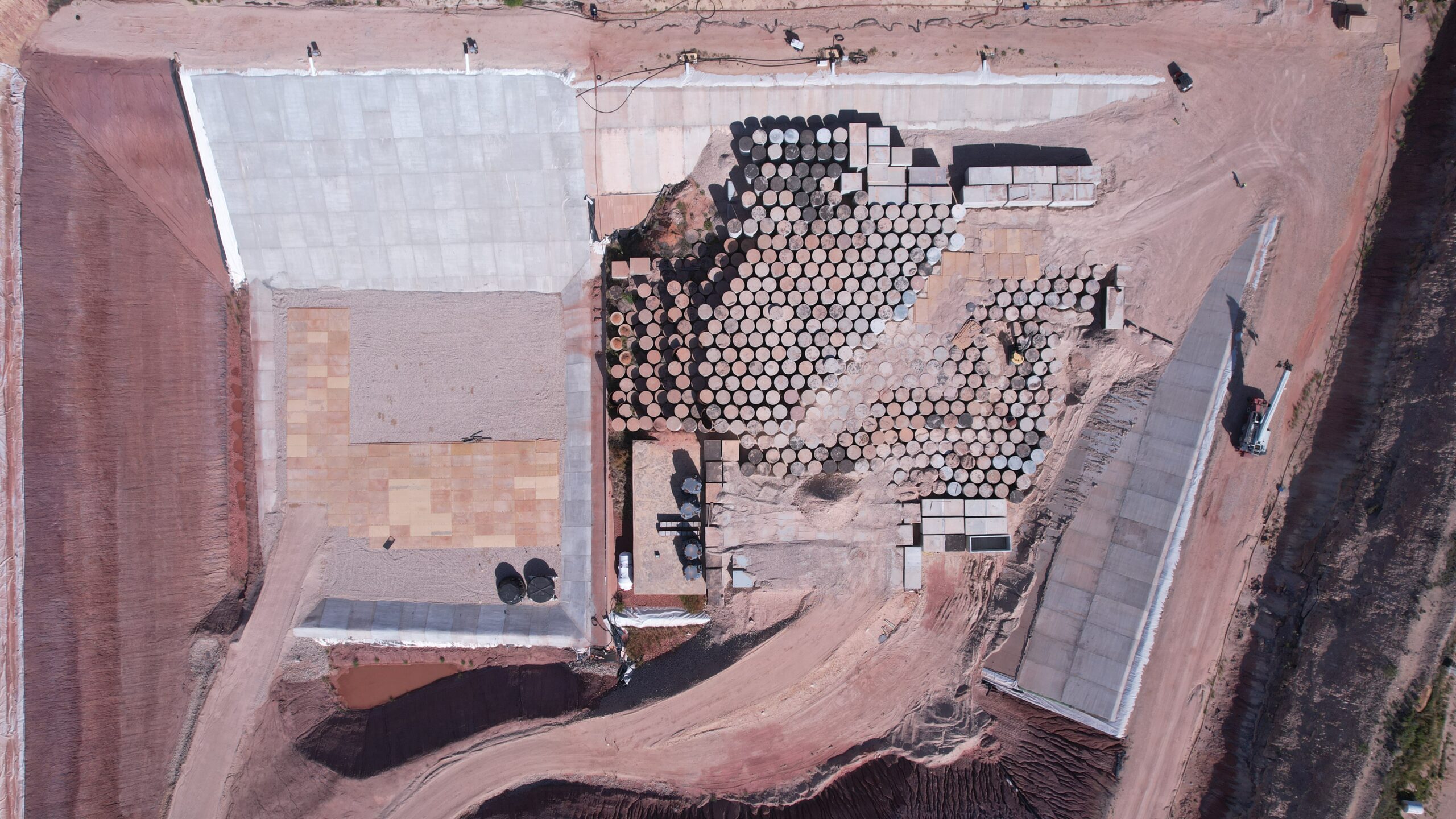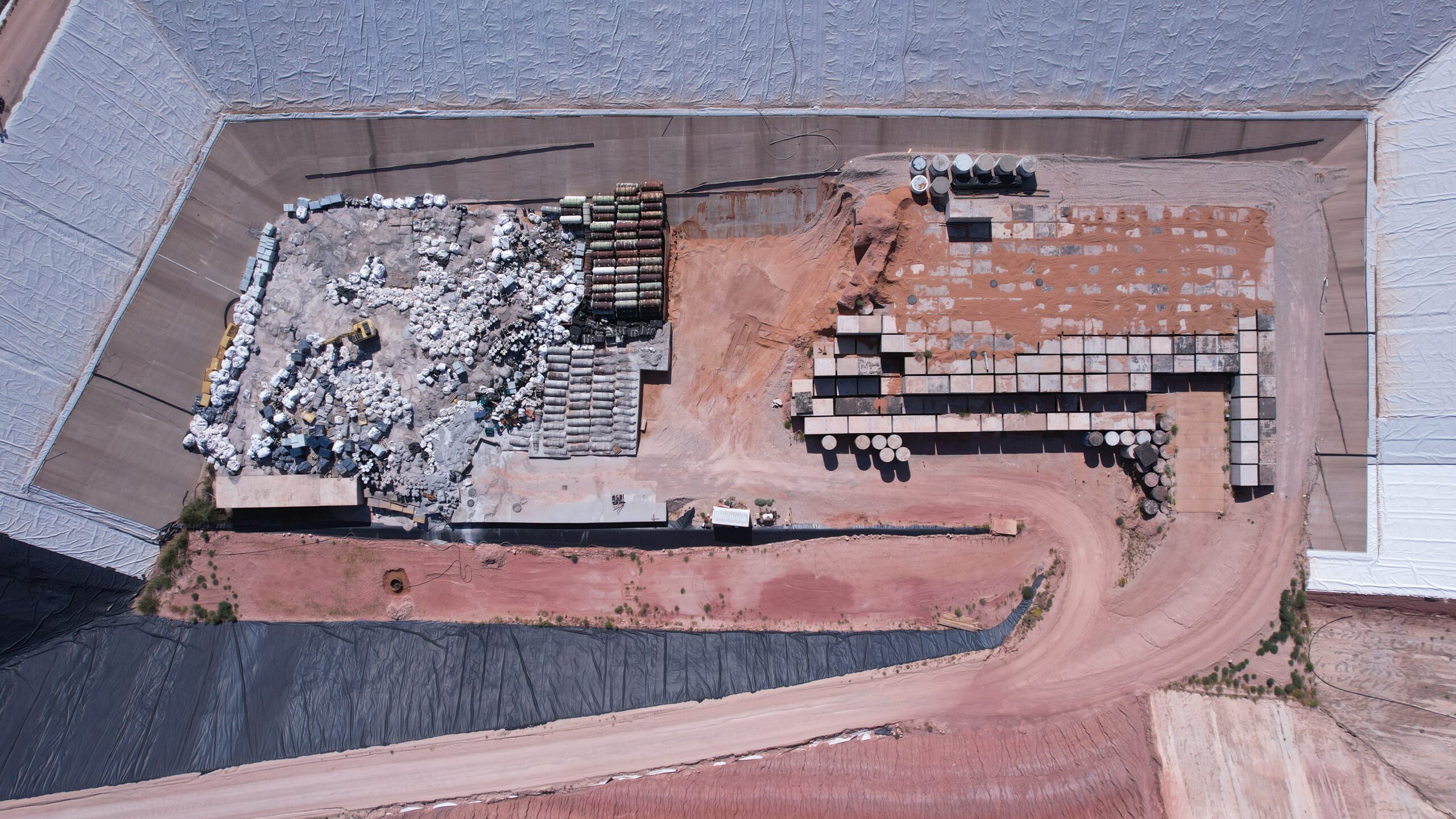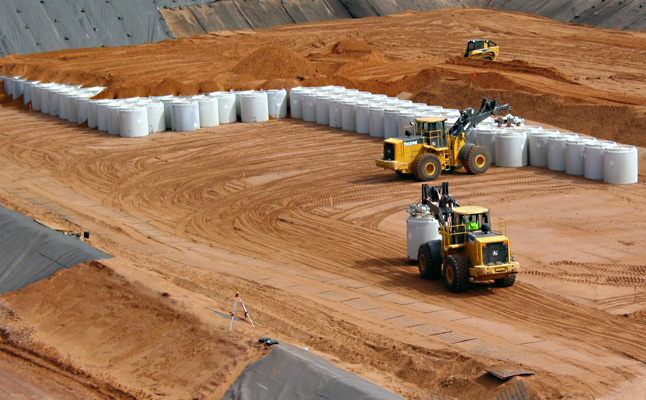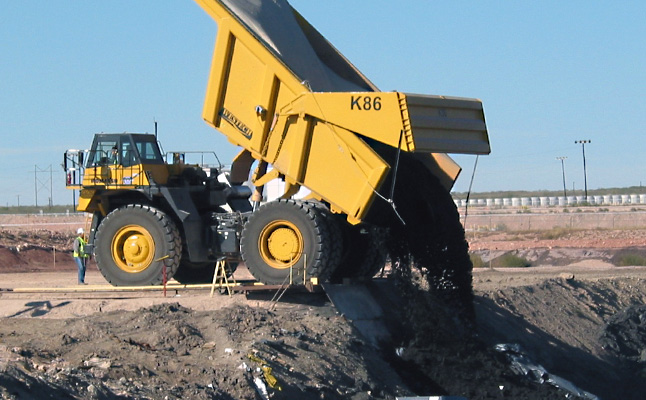
Operational since 2012, the Texas Compact Waste Facility (CWF) is owned and licensed by the State of Texas and operated by Waste Control Specialists. The CWF is the only commercial facility in the United States to receive a license, and become operational, for the disposal of Class A, B and C Low-level Radioactive Waste (LLRW) in the past 40 years.
The member states of the Texas Compact are Texas and Vermont. As the host/party states, Texas and Vermont are providing a solution to the long-term need for disposal of LLRW. The CWF is also available for the 34 U.S. states that do not have access to a compact disposal facility. Out-of-compact generators, however, must submit an import petition to the Texas Compact Commission for approval prior to shipping. The State of Texas also limits total non-compact waste disposed at the CWF to 30 percent of licensed capacity.
CWF offers 9,000,000 cubic feet and 3,890,000 curies of waste disposal space.
- CWF accepts LLRW that is generated in a host/party state or from a non-host/non-party state provided they have received approval for importation by the Texas Compact Commission.
For more information on the Compact Waste Facility’s capabilities, please see the CWF Generator Handbook link below.
If you are unsure of whether or not your disposal needs can be met by WCS, please, call our West Texas Office for consultation at (432) 525-8500.
How to Send Waste

The WCS Federal Waste Disposal Facility (FWF) was designed, permitted, and constructed for disposal of Class A, B and C Low-level Waste (LLW) and Mixed Low-level Waste (MLLW). The facility was constructed with the sole purpose of disposing of waste that is the responsibility of the Federal Government as defined by the Low-Level Radioactive Waste Policy Act, Amended.
All hazardous and radioactive waste at the FWF is encapsulated in a robust liner and cover system, featuring a seven-foot-thick liner system which includes a one-foot-thick layer of reinforced concrete, and an-RCRA compliant geosynthetic layer. In addition, all of the waste is buried within the highly impermeable red-bed clay formation that extends hundreds of feet beneath the deepest layer of waste.
The Federal Waste Facility opened on June 6, 2013. Phase 1 of 11 is currently constructed and upon completion, the FWF will have a licensed capacity of up to 26,000,000 cubic feet and 5,600,000 curies total. It is not to exceed 8,100,000 cubic feet and 5,500,000 curies of containerized Class A, Class B and Class C in disposal capacity through September 2024. WCS obtained a license for the facility for 15 years with a provision of 10-year renewals.
For a full list of FWF capabilities, please review the FWF Generator Handbook below.
If you are unsure of whether or not your disposal needs can be met at WCS, please call our West Texas Office for consultation at (432) 525-8500.
How to Send Waste
 WCS’ Byproduct Facility is located within a 16-acre landfill with an engineered liner, associated support structures on the surface and a buffer zone. The total disposal capacity of the facility is approximately 1 million cubic yards.
WCS’ Byproduct Facility is located within a 16-acre landfill with an engineered liner, associated support structures on the surface and a buffer zone. The total disposal capacity of the facility is approximately 1 million cubic yards.
Disposal operations at the Byproduct Facility occur completely below grade within a thick layer of red-bed clay. This red-bed clay is a laterally extensive (tens of hundreds of miles) and very thick (>1000 feet) massive clay and sandstone/siltstone formation.
The waste that has been disposed in the Byproduct Facility was shipped from the DOE’s Fernald site, located outside of Cincinnati, Ohio. The cleanup effort, considered a successful reclamation project by the federal government, has helped return a previous Cold War-era nuclear arms facility into a wildlife and nature preserve for the enjoyment of the public for centuries to come.
WCS currently has extensive authorizations and permits allowing for receipt, treatment, storage and landfill disposal of hazardous/toxic waste and radioactive waste defined as “Exempt” under Title 25 Texas Administrative Code Part 289. We also have authorization for the receipt, treatment, and storage of low-level and mixed low-level wastes including TRU and Greater-Than-Class-C wastes. The site includes a RCRA Subtitle C landfill and is directly accessible via WCS’ onsite rail spur.
WCS’ current regulatory authorizations include the following:
- Industrial Solid Waste and Hazardous Waste Storage, Processing, and Land Disposal Resource Conservation and Recovery Act Permit # HW-50358 granted by the Texas Commission on Environmental Quality (TCEQ).
- Authorization No. TXD988088464 granted by the U.S. Environmental Protection Agency (EPA) for Treatment, Storage, and Land Disposal of Toxic Substances Control Act (TSCA) wastes, including polychlorinated biphenyls (PCBs) solids (unlimited concentration) and asbestos.
The WCS facilities include a state-of-the-art, negative pressure Process Building dedicated to the treatment of radioactive and mixed waste.
This processing facility includes:
- More than 20,000 square feet of treatment and staging area and an 80 cubic yard capacity mixing pan.
- A “Permacon” tent staged in the building provides for double-containment treatment if necessary.

A Stabilization Building has two additional 80 cubic yard mixing pans for hazardous waste only. Covered storage is available in the Container Storage Area with 37,500 cubic feet of waste storage capacity and the Bin Storage Area with 2,160 cubic yards of storage capacity (liquid or solid). WCS is authorized to store up to 1.5 million cubic feet of waste
WCS provides the following treatment technologies:
- Chemical oxidation
- Chemical reduction
- Deactivation
- Neutralization
- Stabilization
- Controlled reaction
- Micro- and Macro-encapsulation
Disposal Capabilities
- Current permit allows for safe disposal of 5,423,000 cubic yards of Land Disposal Restriction (LDR) compliant hazardous waste.
- Near-surface disposal in a designated landfill of 2,100,000 cubic yards of LLW and MLLW generated/owned by the federal government, of which approximately 900,000 cubic yards is expected to be canister disposal and 1,200,000 cubic yards is expected to be non-canister (bulk) disposal.
- Near-surface disposal in a designated landfill of 100,000 cubic yards of LLW generated within the Texas Compact (Texas and Vermont).
- Near-surface disposal in a designated landfill of 1,000,000 cubic yards of by-product material generated by the federal government and the commercial/private sector.
- Exempt radioactive waste meeting the following criteria:
- Source material with <0.05% by weight of U and Th equivalent to U-238 up to 166.5 pCi/gm and Th-232 up to 54.5 pCi/gm
- Finished products or parts containing metal Th alloys with Th <4% by weight
- Specifically exempt items manufactured under a specific license that authorizes the transfer to exempt persons
- Naturally Occurring Radioactive Material (NORM) containing Ra-226 or Ra-228 at less than 30 pCi/gm or any other NORM radionuclide less than 150 pCi/gm
- Unrefined or unprocessed ores containing source material (U or Th)
- Rare earth metals, compounds, mixtures, or products containing <0.25% by weight of Th or U or any combination thereof
- Depleted U in counterweights installed in aircraft, rockets, projectiles, or missiles
- Any other specific item exempt from licensing under Texas rules
Texas Compact Waste Facility (CWF)
- Operational since 2012
- Class A, B and C Low-level Radioactive Waste (LLRW)
- 9,000,000 cubic feet
- 3,890,000 curies of waste disposal space
Federal Waste Facility (FWF)
- Operational since 2013
- Class A, B and C Low-level Waste (LLW)
- Mixed Low-level Waste (MLLW)
- Up to 26,000,000 cubic feet
- 5,600,000 curies total
Byproduct Facility
- Located in a 16-acre landfill
- Engineered liner, support structures and a buffer zone
- ~1 million cubic yards disposal capacity
Hazardous/TSCA/Exempt Waste Facility
- State-of-the-art negative pressure process building
- Extensive treatment technologies
- Hazardous/toxic waste and radioactive waste defined as “Exempt”
- Low-level and mixed low-level wastes including TRU and Greater-Than-Class-C wastes
